Walls in Puglia……….
10 Thursday Apr 2014
Posted in Me, Photography
10 Thursday Apr 2014
Posted in Me, Photography
09 Wednesday Apr 2014
Posted in Me, Photography
08 Tuesday Apr 2014
Posted in Art, Lucien Lévy-Dhurmer
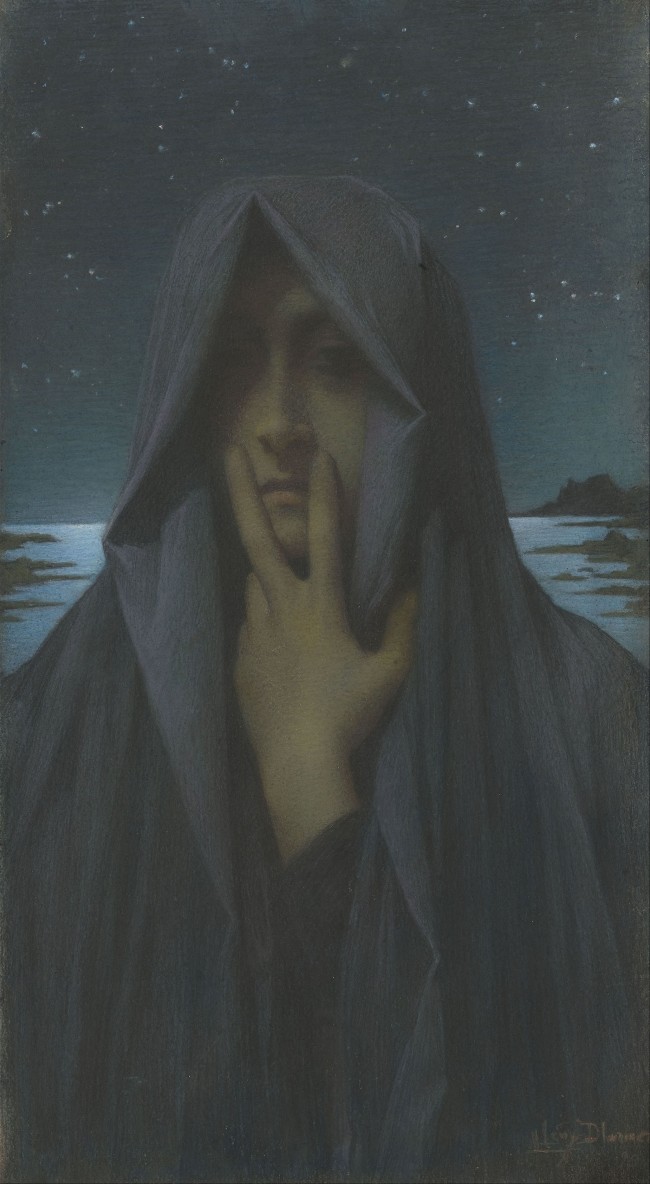
Le Silence
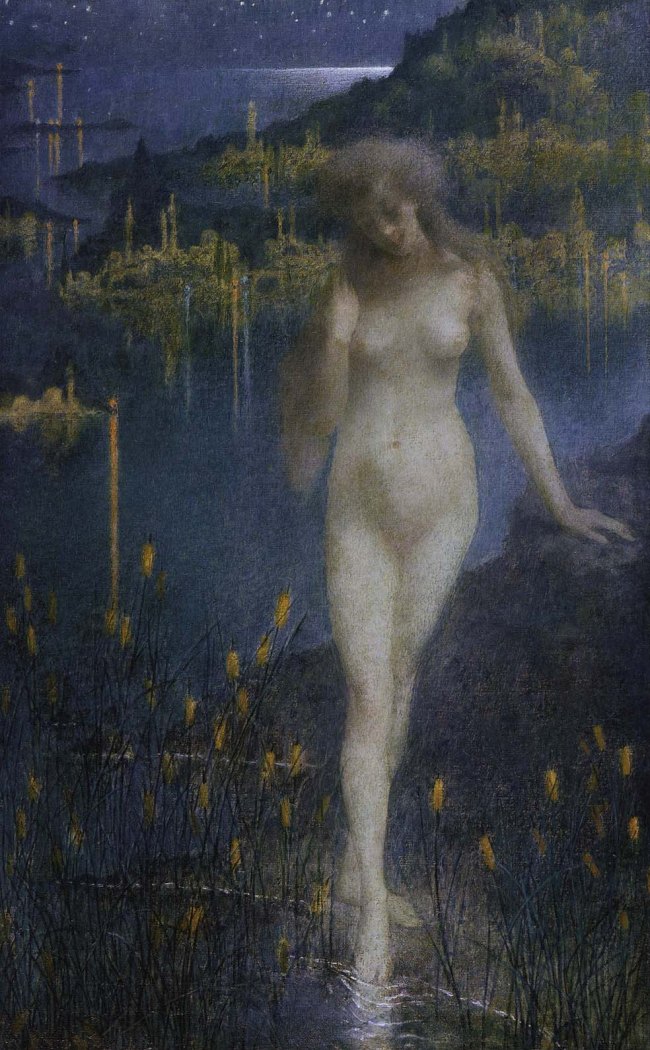
Nocturne on the Bosphorus

La Femme à la Médaille ou Mystére
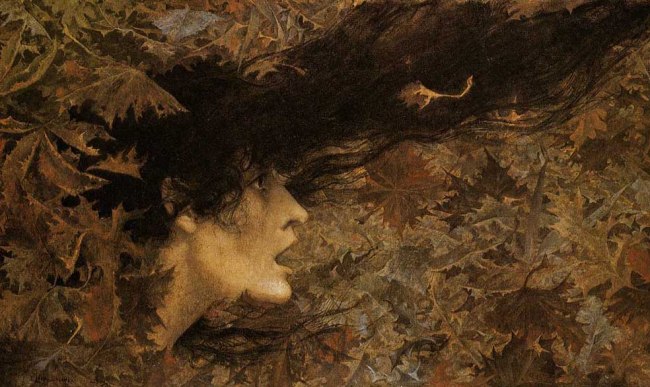
A Gust of Wind
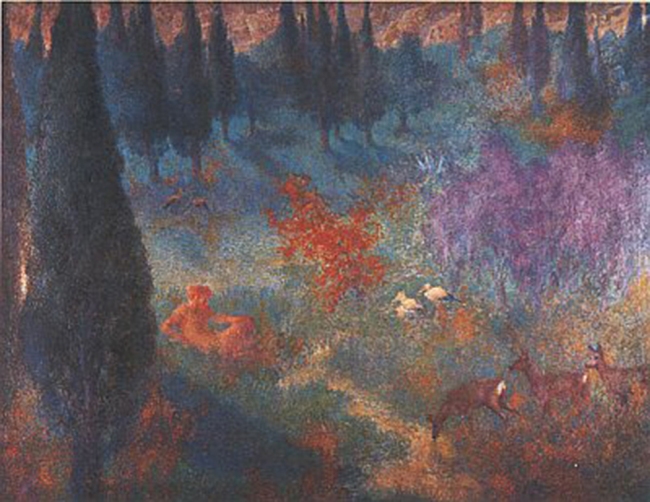
Après-midi d’un Faune
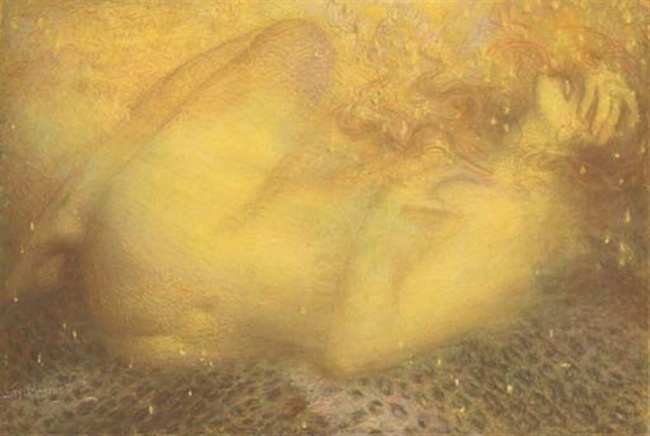
Femme Bérbère
Lucien Lévy-Dhurmer (September 30, 1865 – September 24, 1953) was a French Symbolist/Art Nouveau artist whose works include paintings, drawings, ceramics, furniture and interior design. n 1887 Lévy began making his living near Cannes in southern France, overseeing the decoration of ceramics. From 1886 to 1895 he worked as a ceramic decorator and then as artistic director of the studio of Clément Massier. Around 1892 he signed his first pieces of ceramics, which were influenced by Islamic Art. In 1895 he left for Paris to begin a career in painting; around this time he visited Italy and was further influenced by art of the Renaissance. In 1896 he exhibited his first pastels andpaintings. His paintings soon became popular with the public and among fellow artists as well. He earned high praise for the academic attention to detail with which he captured figures lost in a Pre-Raphaelite haze of melancholy, contrasted with bright Impressionist colourationAfter 1901 Lévy-Dhurmer moved away from expressly Symbolist content, incorporating more landscapes into his work because of his travels in Europe and North Africa. He continued to draw inspiration from music and attempted to capture works of great composers such as Beethoven in painted form.
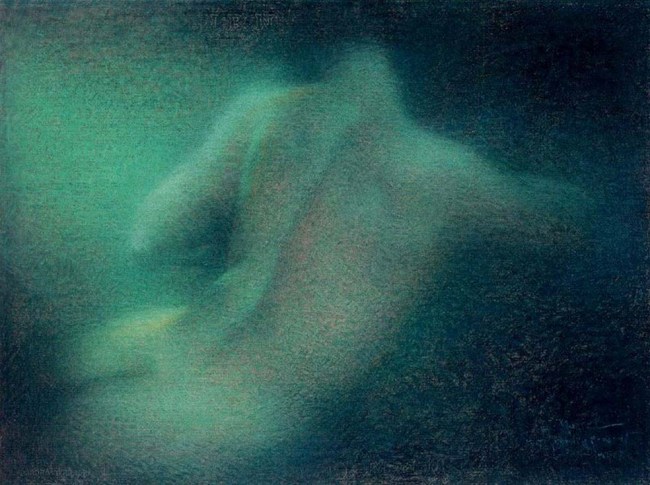
Harmonie en bleu. Variation sur la Sonate. au clair de lune
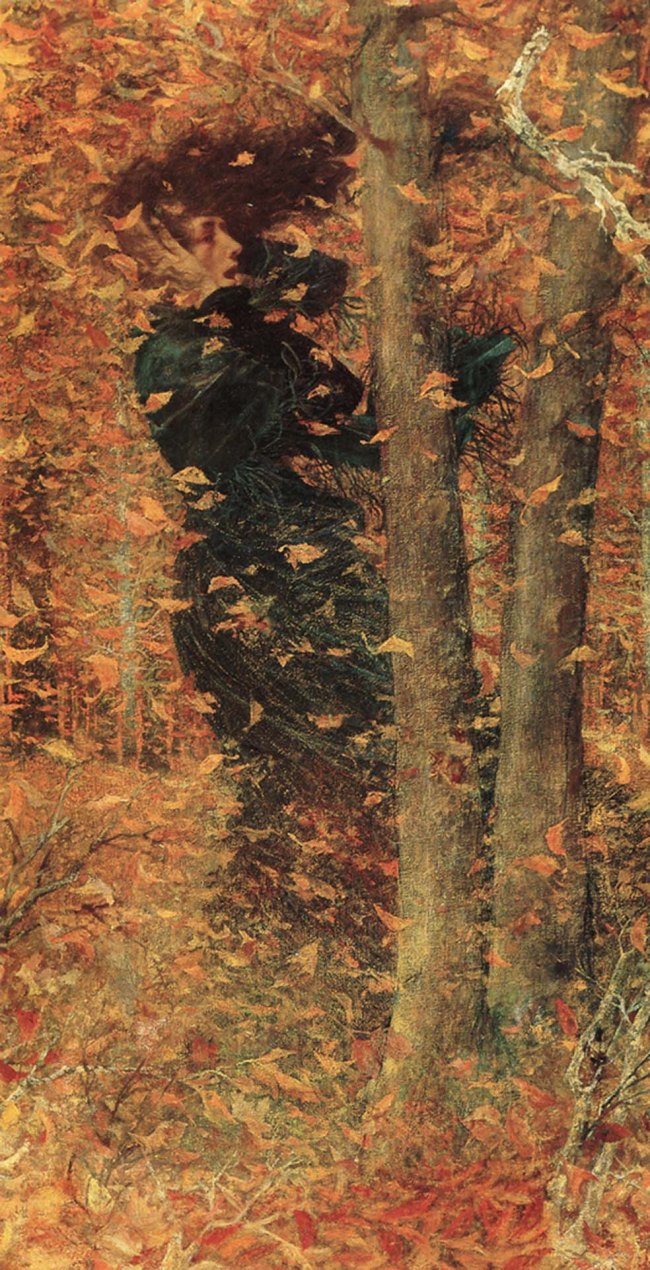
La bourrasque
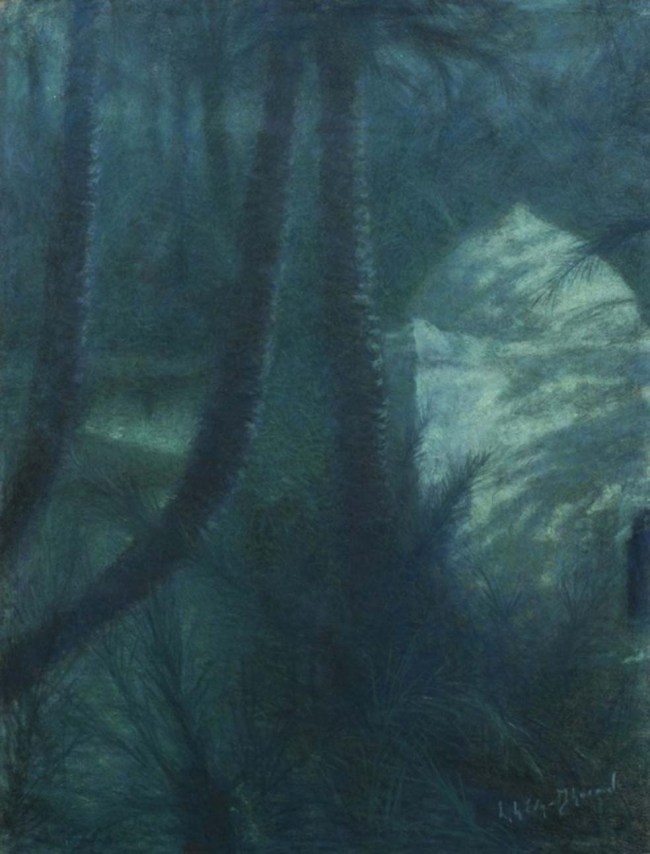
La Palmeraie, Marrakech
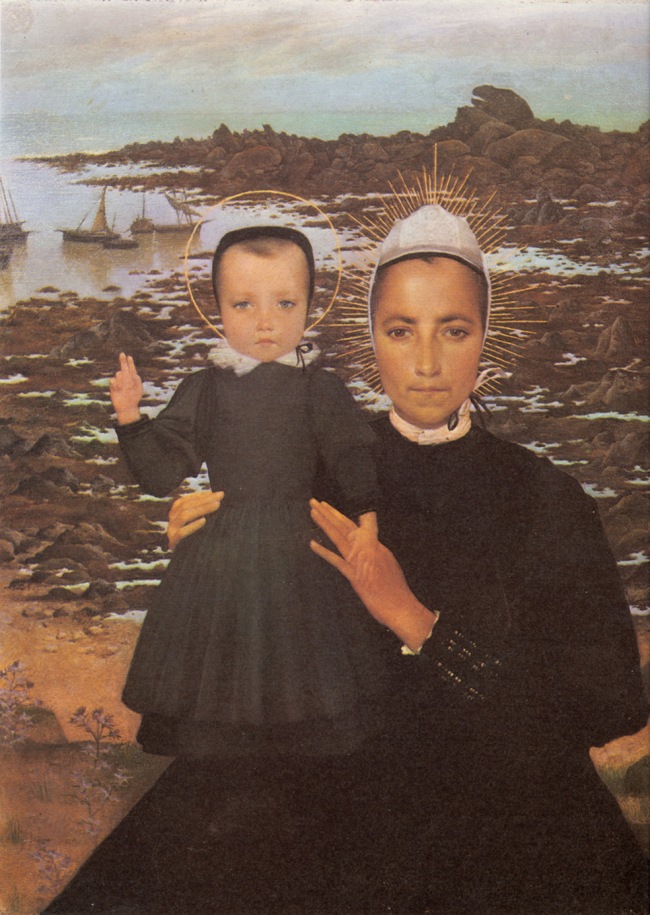
Notre-Dame de Penmarch
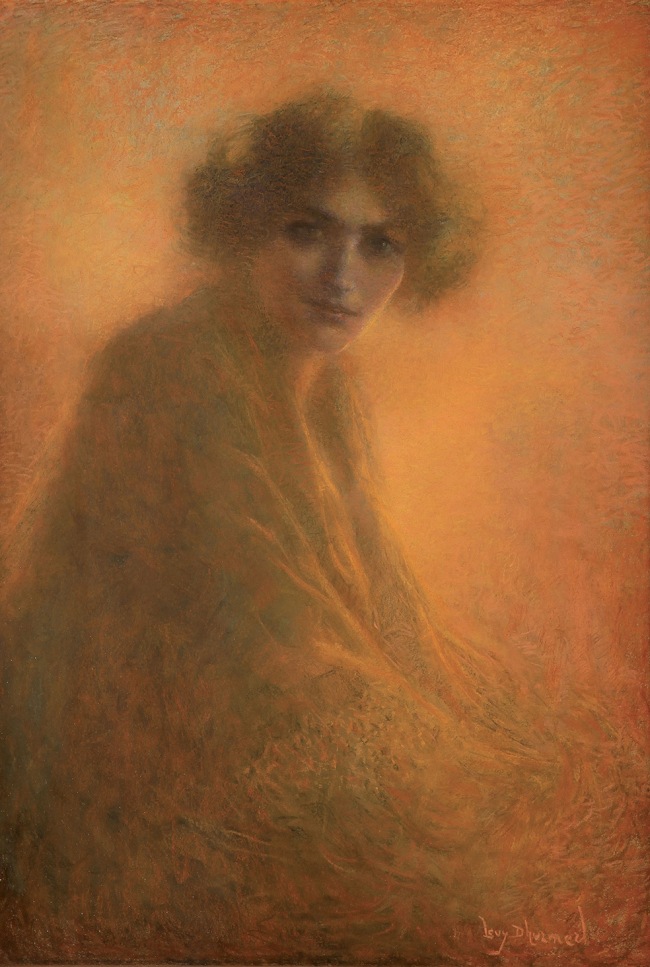
Portrait de femme
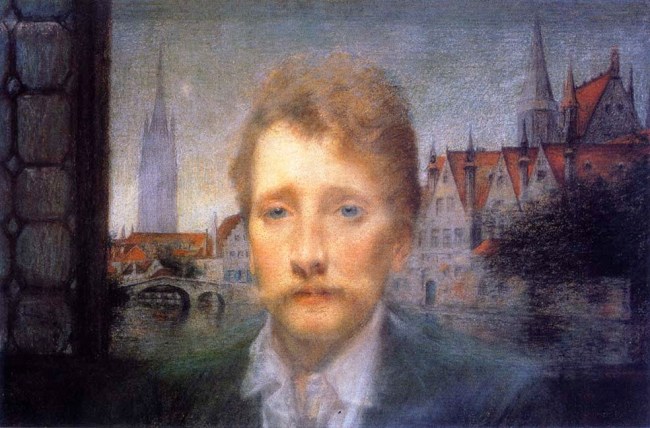
Portrait of George Rodenbach
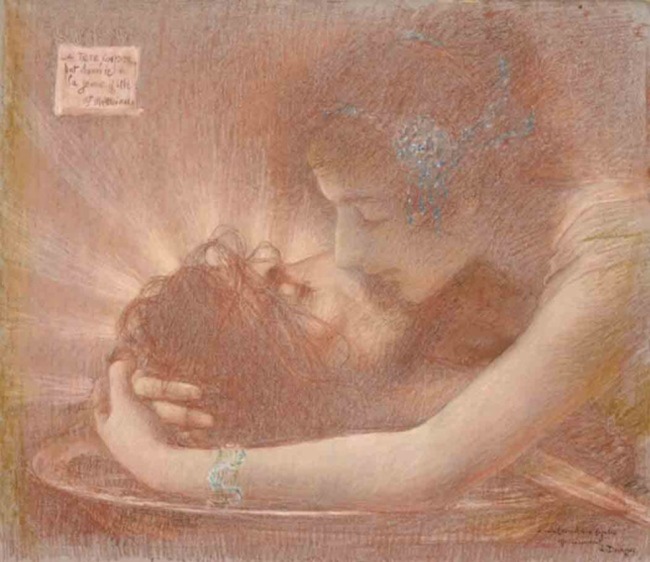
Salomé

Vision d’Automne
Lucien Lévy-Dhurmer (30 de septiembre,1865 – 24 de septiembre, 1953.) Nació Lucien Lévy en el seno de una familia judía de Argel. En 1879 comenzó a estudiar dibujo y escultura en París.En 1887 Levy comenzó ganándose la vida en el sur de Francia, supervisando decoración de cerámicas. Su gusto en la decoración de cerámica fueron influenciados por el arte islámico.En 1895 se marchó a París para comenzar una carrera con la pintura, en esta época visitó Italia y fue más influenciado por el arte del Renacimiento. En 1896 expuso sus primeras pinturas y pasteles con el nombre de Lucien Lévy-Dhurmer; había añadido las dos últimas sílabas del nombre de soltera de su madre, probablemente para diferenciarse de otras personas con nombre de Lévy. Sus pinturas se hicieron populares, tanto para el público, como entre otros artistas. Obtuvo grandes elogios por los detalles con los que capturó la bruma de melancolía de los prerrafaelitas, en contraste con los brillantes colores impresionistas. A partir de 1901 Lévy-Dhurmer se apartó de forma expresa del simbolismo, incorporando más paisajes a su obra. Siguió inspirándose en la música y trató de capturar en pintura las obras de grandes compositores como Beethoven.Murió en Le Vésinet en 1953.
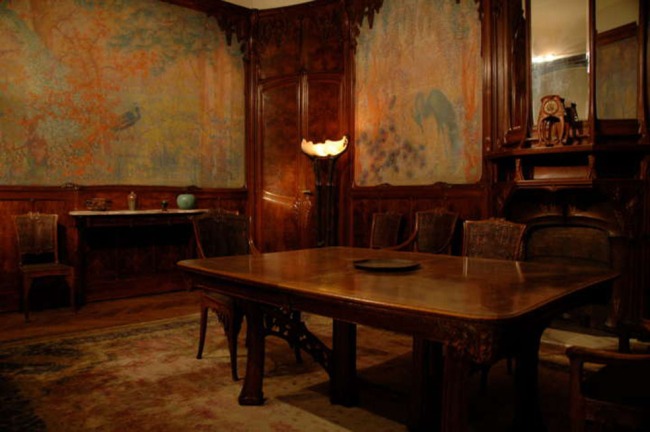
Wisteria Dining Room
24 Monday Mar 2014
Posted in Albert Von Keller, Art, Paris
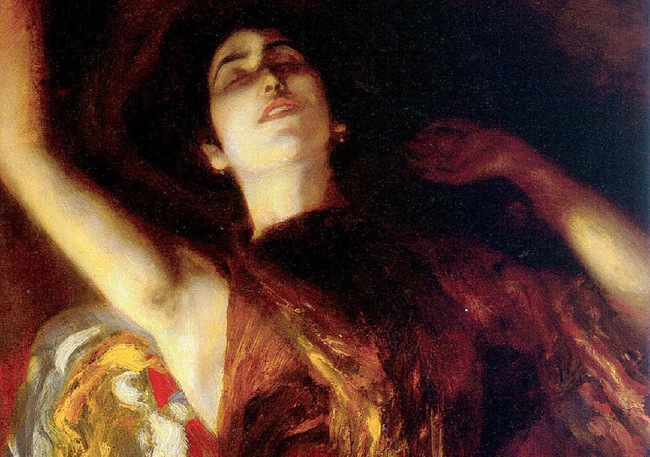
Cassandra
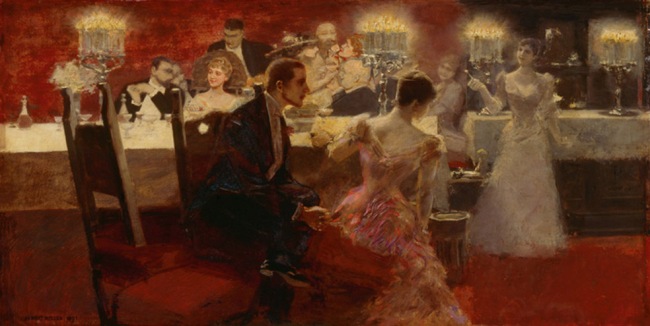
Le Diner
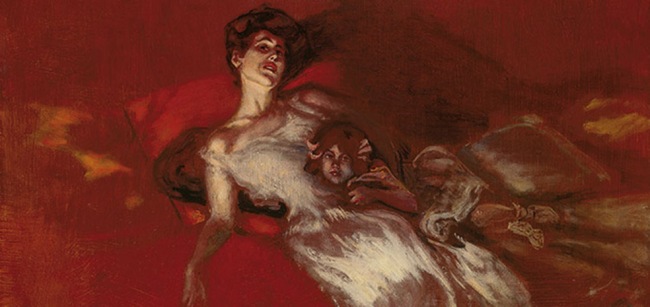
Gisela with Daughter
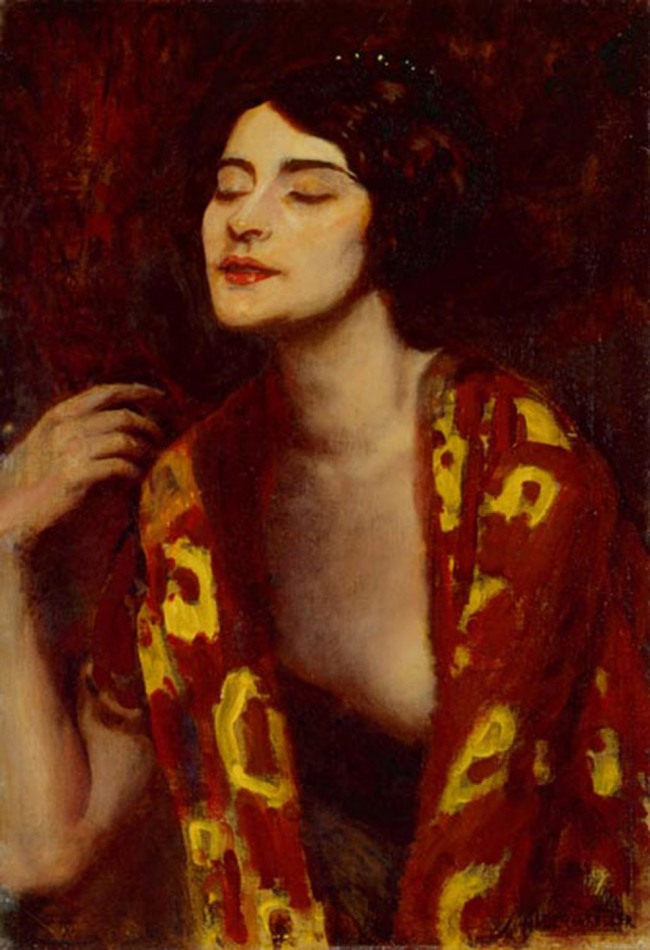
In Erwartung (Gisela von Wehner)

Crucifixion vision

Descent into Hell
Fascinated by the mysteries of the human psyche, the Swiss-born painter Albert von Keller (1844–1920) is remembered today more for his spectacular subject matter than for his exceptional artistic ability. In fact, although Keller was a founding member of the Munich Secession, an influential artists’ association, and was highly regarded in Europe and America at the dawn of the twentieth century for his “modern” psychological painting, he has never before been the subject of a solo exhibition in America. Keller’s close association with the Munich psychiatrist Dr. Albert von Schrenck-Notzing (1862–1929), and his participation in séances and occult experiments, placed him at the center of passionate debates in fin de siècle Germany on Seelenleben, or the life of the soul. While fascinated by the paranormal, Keller was equally enthralled by traditional Christian narratives such as the raising of the dead, the powers of mystical healing, and the mysteries of stigmata. He engaged in a lifelong search for new techniques and visual forms to describe shifting, uncertain states of being and becoming.

Nude Female with Mask
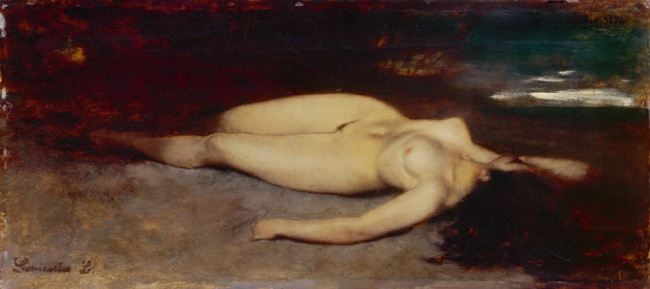
Nude on the beach

Reclining nude
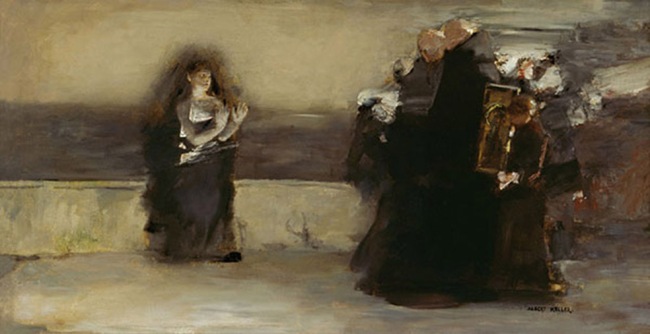
Stigmatization Study
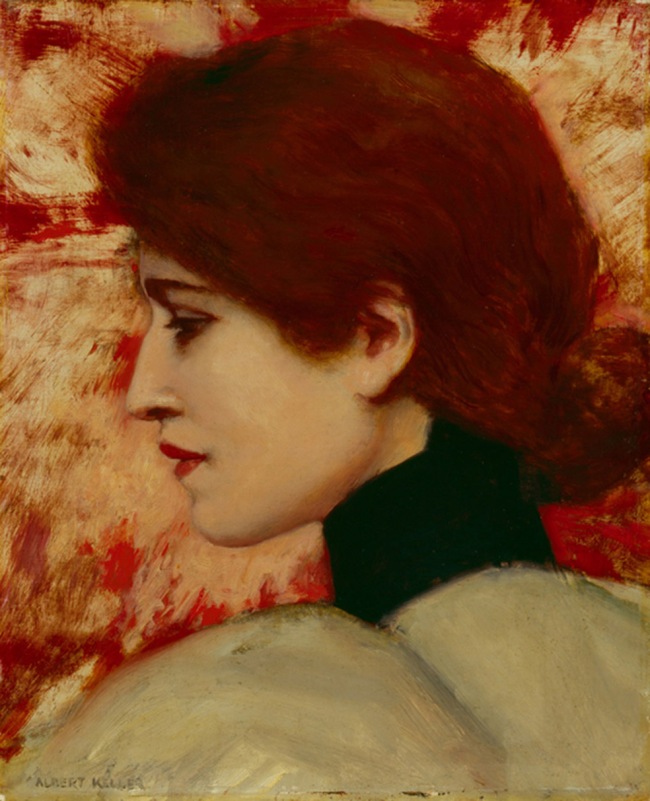
The Anonymous Medium Lily
Albert von Keller (Gais, Suiza, 27 de abril de 1844 – Múnich, 14 de julio de 1920) fue un pintor alemán. Keller estudió en la Academia de Múnich, donde fue alumno de Franz von Lenbach y Arthur von Ramberg. Debe incluirse entre los coloristas más importantes de la escuela moderna alemana. Sus viajes a Italia, Francia, Inglaterra y Holanda, así como su residencia por un tiempo en París, le ayudaron a desarrollar su estilo, que llegó a caracterizarse por un sentido de la elegancia y un refinamiento poco comunes en el arte alemán. Sus escenas de la vida de sociedad, como su famosa obra Dinner (1890), muestran un espíritu que puede denominarse parisino, y sus retratos destacan por la misma distinción elegante. Fue especialmente hábil en plasmar la textura de los vestidos y telas de seda y satén.

The Dream Dancer Madeleine

Die Erweckung der Tochter des Jairus

Burning of the witch
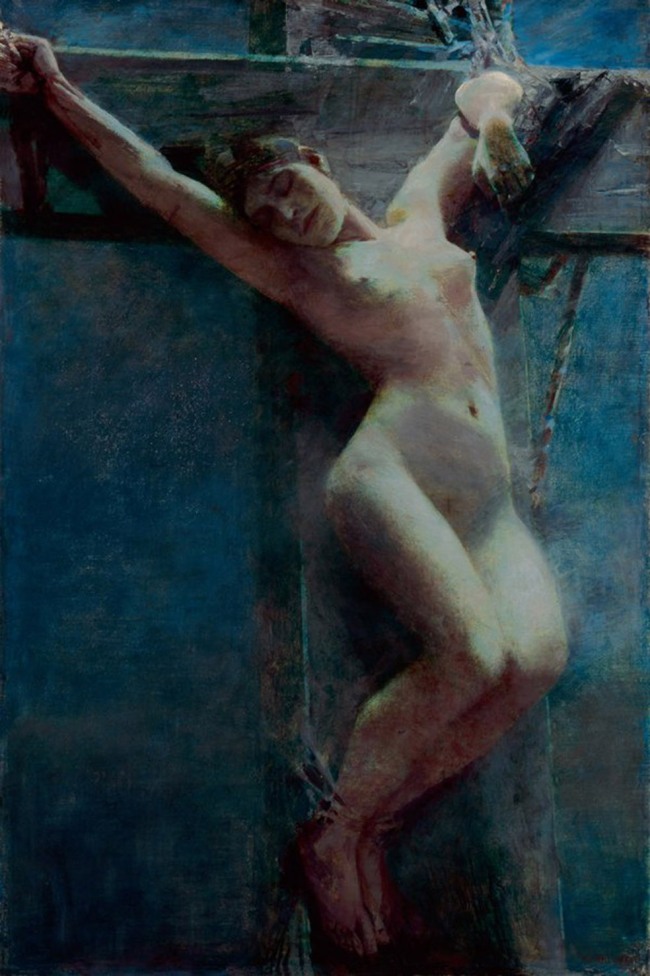
In the moonlight

Incident at a Seance

Milli Beckmann, Paris
21 Friday Mar 2014
Posted in Art, Unknown title
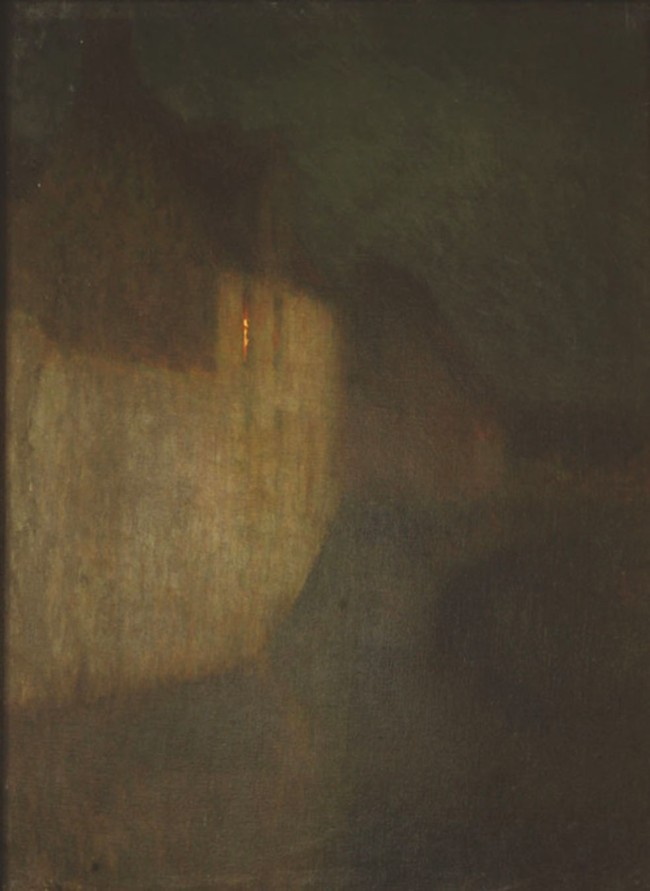
By the light of the moon in Bruges, 1898
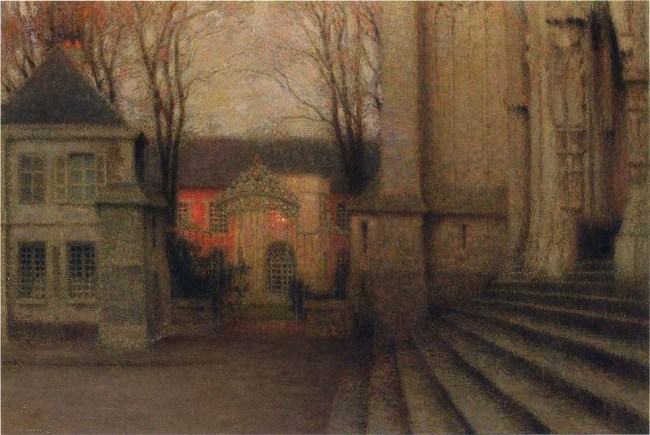
Étapes à Chartres 1913
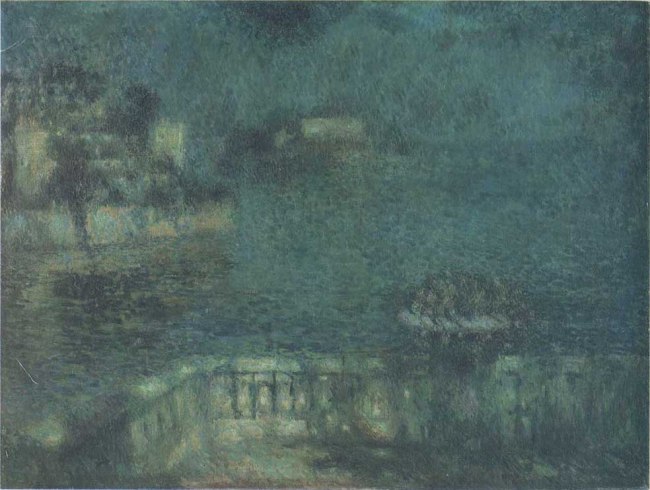
Pleine Lune 1909
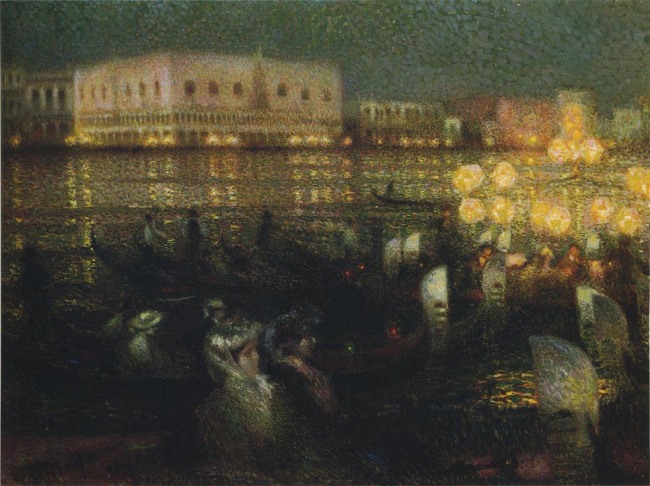
La Serenade, Venice c.1920
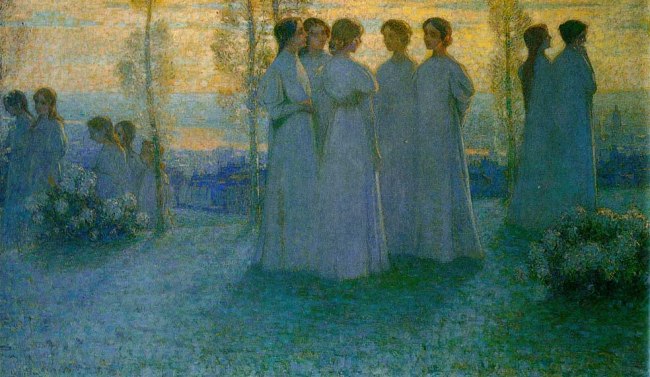
Le Dimanche 1898
Henri Eugène Augustin Le Sidaner (7 August 1862 – July 1939) was an intimist painter born to a French family in Port Louis, Mauritius. In 1870 he and his family settled in Dunkirk. Le Sidaner received most of his tutelage from the École des Beaux-Arts under the instruction of Alexandre Cabanel but later broke away due to artistic differences. Between 1885 and 1894 Le Sidaner lived the year round at the Etaples art colony and was joined there by his childhood friend Eugène Chigot (1860–1923), who shared his interest in atmospheric light. Later Le Sidaner traveled extensively throughout France. He also visited many cities around the globe, as well as villages throughout Europe. He exhibited at the Salon, the Galeries Georges Petit in Paris and the Goupil Gallery in London, and settled in Gerberoy.
Marcel Proust’s mention of Le Sidaner’s work in his novel In Search of Lost Time confirms its later reputation. In Sodom and Gomorrah, the narrator mentions that an eminent barrister from Paris had devoted his income to collecting the paintings of the “highly distinguished” but “not great” Le Sidaner.
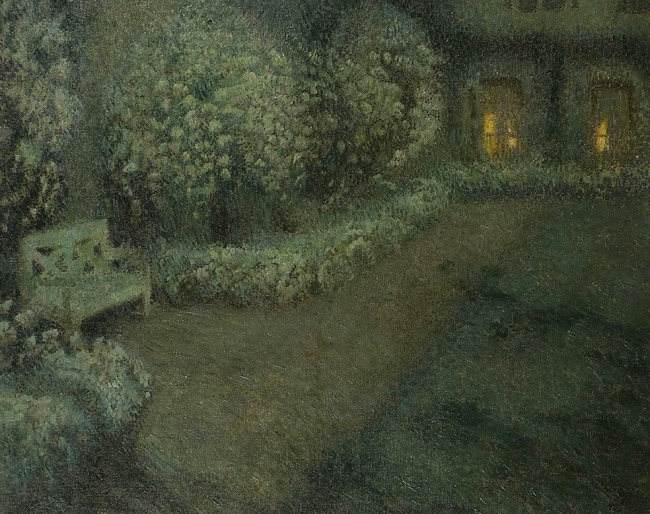
Le Jardin Blanc Au Clair De Lune, Gerberoy 1910
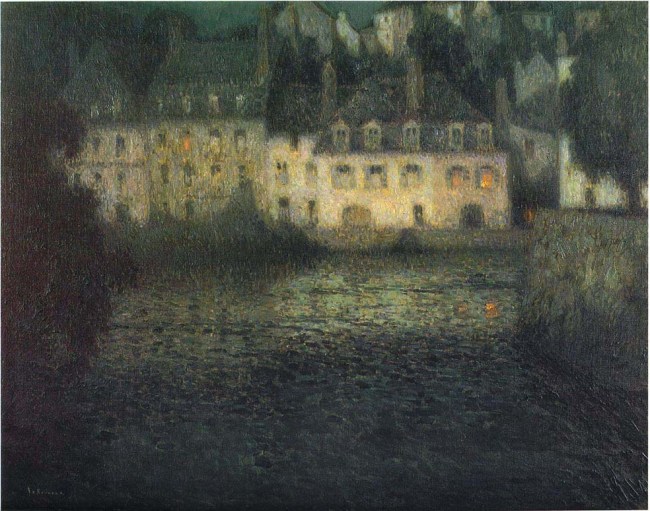
Maison près de la rivière, sous la pleine lune 1920
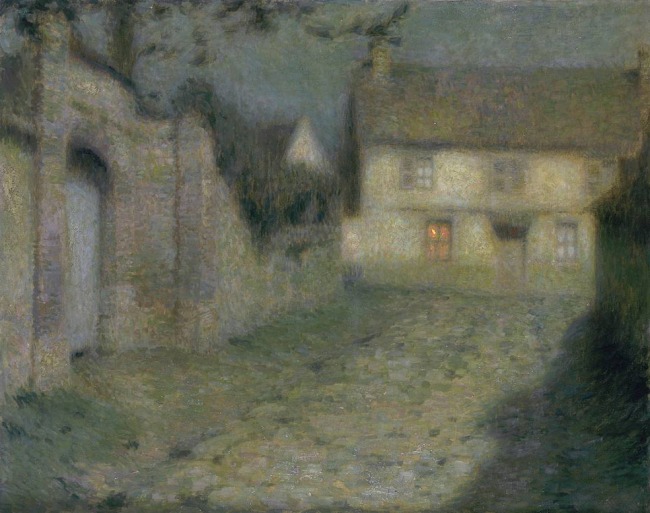
Moonlight at Gerberoy 1912
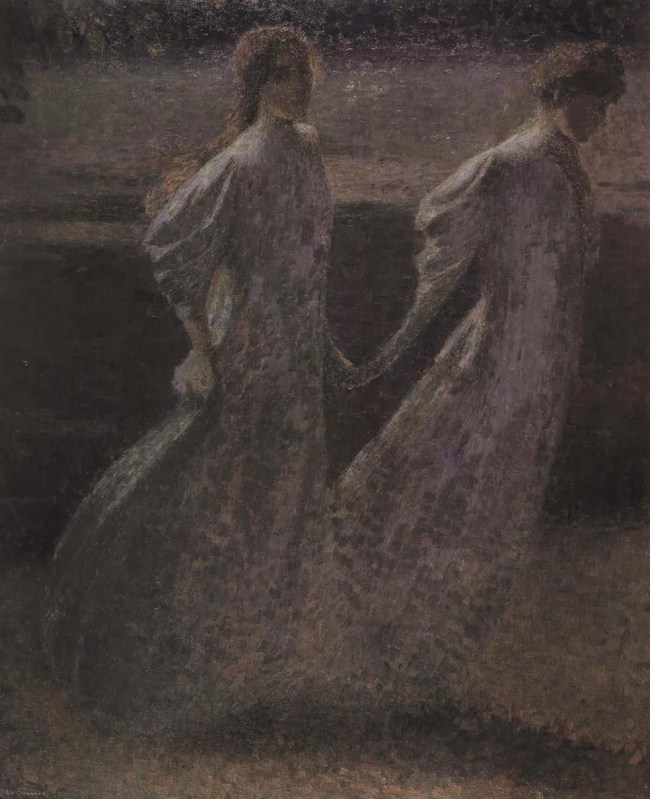
Nocturne c.1905
Nació en el Océano Índico, en Isla Mauricio, antigua colonia francesa que había pasado a dominio británico a principios del siglo XIX. Aún niño se trasladó a Francia con su familia; residió en Dunkerque hasta que a los 18 años se mudó por unos meses a París para estudiar en la Escuela de Bellas Artes, donde fue alumno de Alexandre Cabanel. De vuelta en el Norte, durante una década se centró en pintar paisajes en el pueblo costero de Étaples. En esos años, Le Sidaner se mantuvo fiel a un realismo sentimental con influencia de Camille Corot, mejor asumido que las novedades rompedoras de Georges Seurat y Paul Gauguin. En 1894, Le Sidaner se mudó a París y se sumergió en el simbolismo, tendencia que optaba por una representación estilizada de la realidad en oposición al impresionismo. Con todo, a Le Sidaner no le sedujo el afán narrativo y literario de simbolistas como Pierre Puvis de Chavannes, sino que se mantuvo fiel al género del paisaje, casi siempre sin figuras. Prefería luces tenues, de amanecer y ocaso, que trataba con formas evanescentes y pincelada rota. Pero aunque Le Sidaner pueda parecer un puro impresionista, sus composiciones no están tomadas directamente del natural sino que surgen de una elaboración lenta, e introducen colores caprichosos en armonías sordas, sin el efectismo de los nabis. Su obra fue subestimada por mucho tiempo, etiquetada como un «neo-impresionismo traicionado por el academicismo».
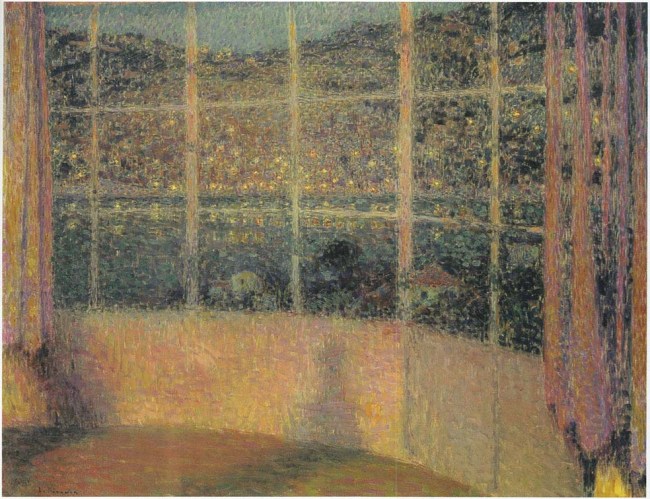
Nuit au Cap Ferrat c.1904
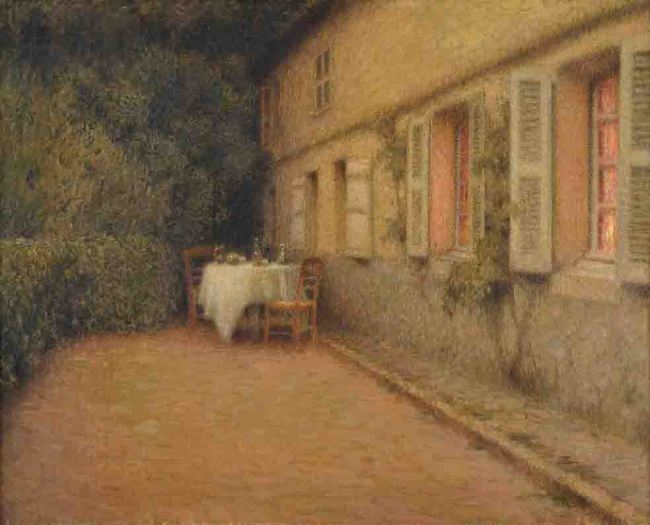
Table prés de la maison 1913
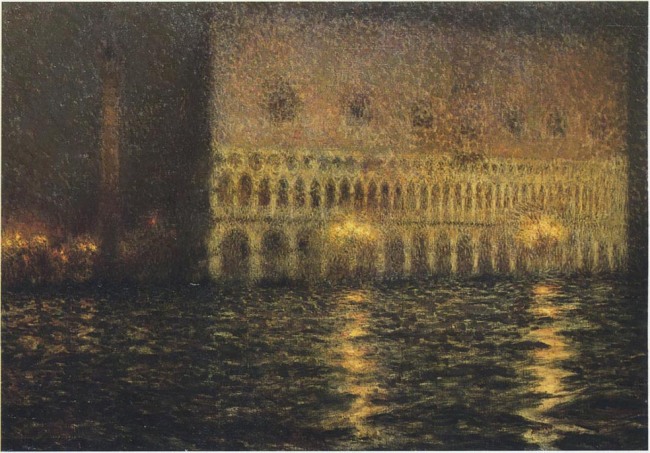
Le Palais Ducal 1905
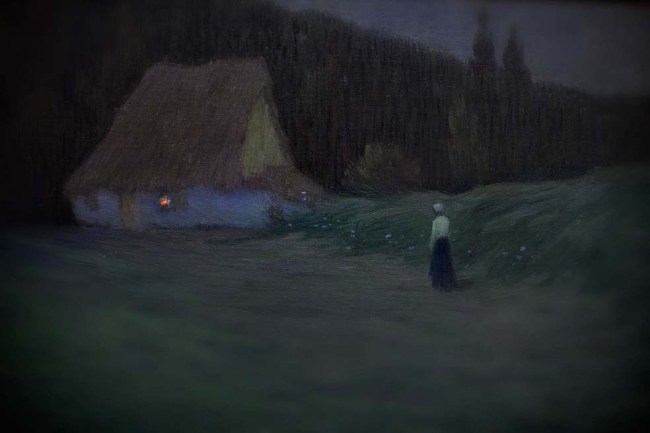
Unknown title
11 Tuesday Mar 2014
Posted in Art
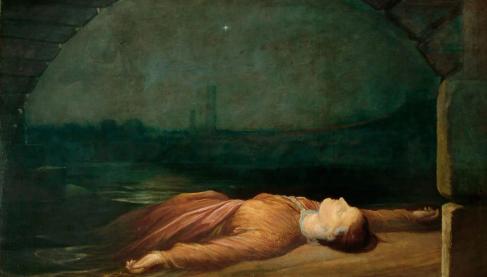 Found Drowned, 1848-50
Found Drowned, 1848-50
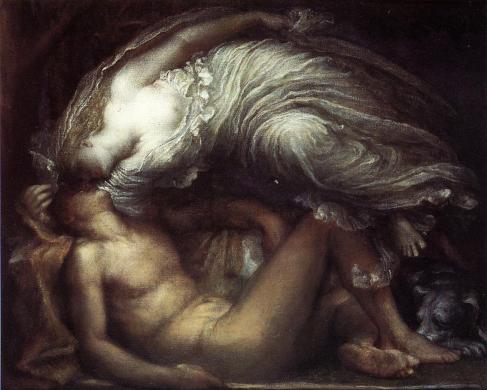
Endymion, 1903
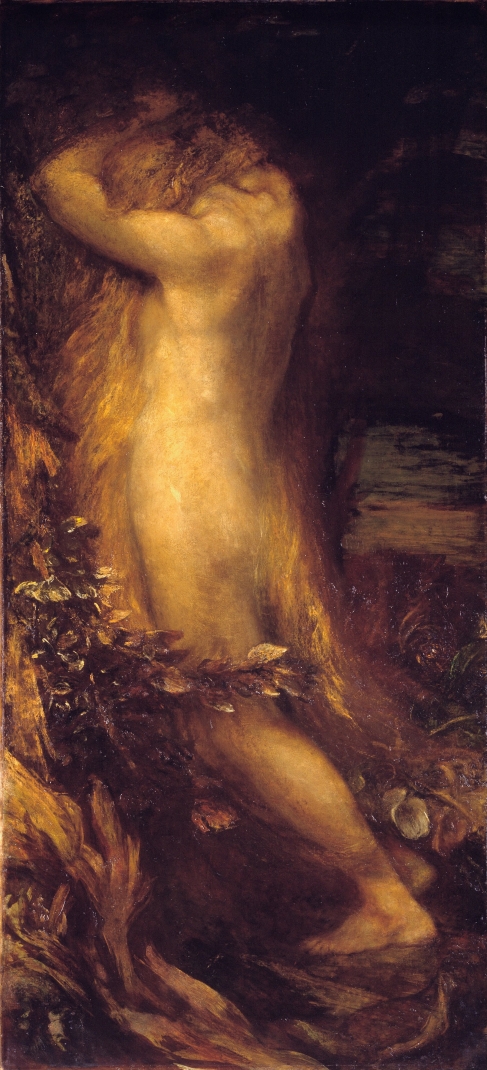
Eve Repentant, c.1860
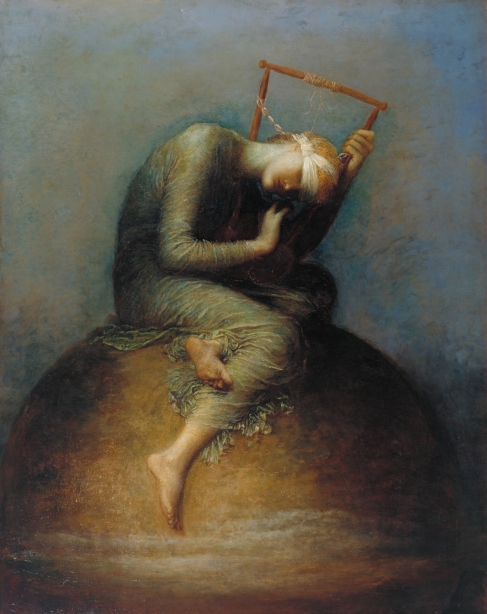
Hope, 1886

Julia Margaret Cameron, 1850
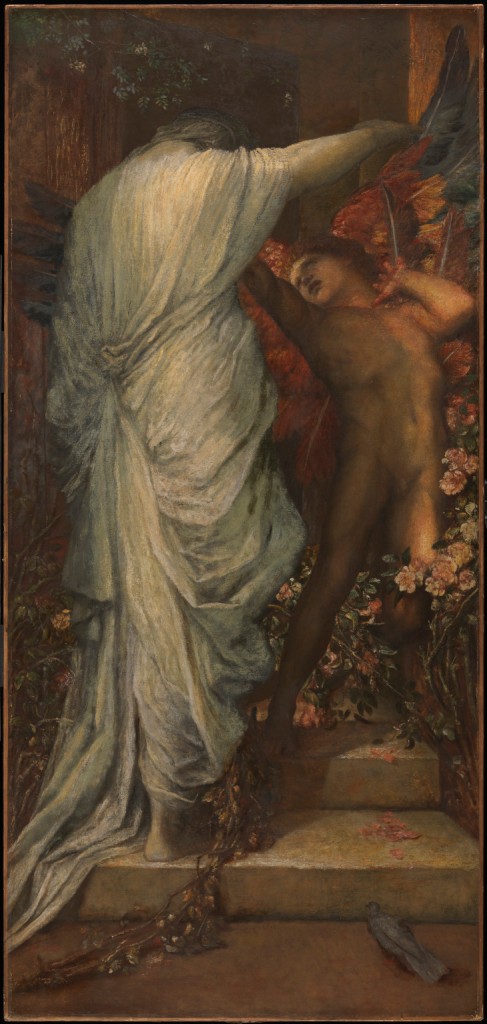
Love and Death, C1885
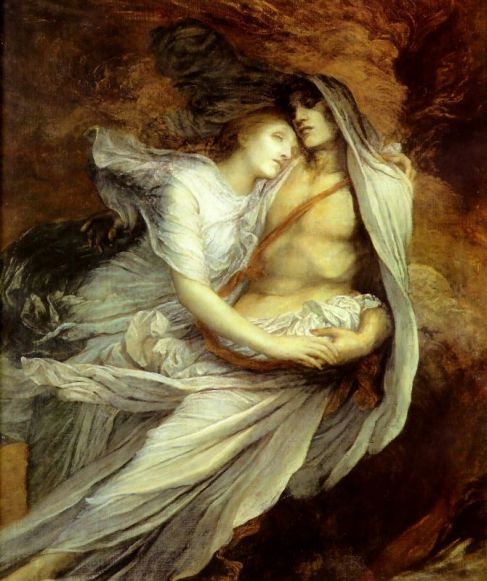
Paulo And Francesco 1854
In his own lifetime George Frederic Watts (1817-1904), was widely considered to be the greatest painter of the Victorian age, enjoying an unparalleled reputation. His ceaseless experimentation embodied the most pressing themes and ideas of the time. A complex figure, Watts was the finest and most penetrating portraitist of his age, a sculptor, landscape painter and symbolist which earned him the title ‘England’s Michelangelo.’ His fame and renown was not limited to Britain and in 1884 he was the first living artist to have a solo exhibition at the Metropolitan Museum of Art, New York, a show so enormously successful that it led to a longer run and a gift of his great work, Love and Life to the American people. His works also found great favour in Europe winning gold medals at the Paris Universal Exhibitions in 1878 and 1889. His influence among symbolists was profound and can be seen in the works of Gustave Moreau and Fernand Knopff. The work of G.F. Watts is of seminal importance in understanding the Victorian period because he was one of its most notable artistic innovators. Watts’s own refusal to become part of any painting movement coupled with the reaction of early twentieth century critics to all things Victorian left his reputation a little tarnished
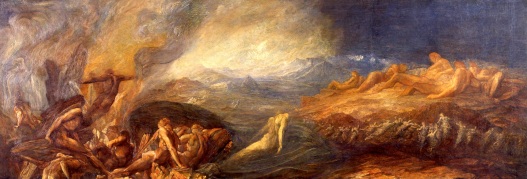
Creation, 1875
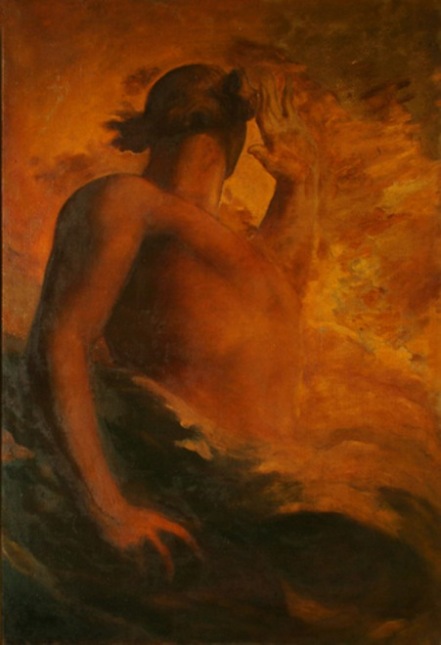
Satan, 1847
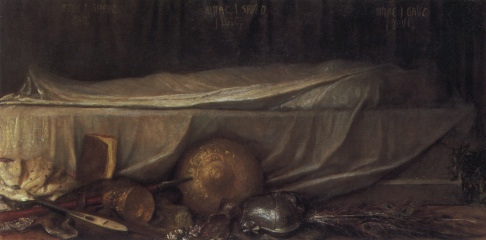
Sic Transit Gloria Mundi, 1897
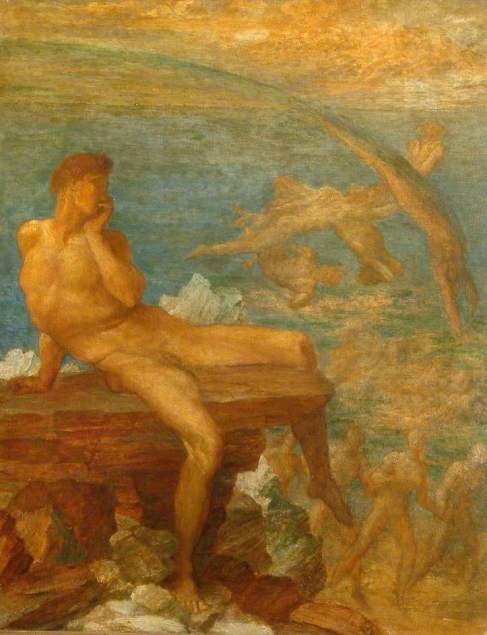
The Genius of Greek Poetry, c.1875
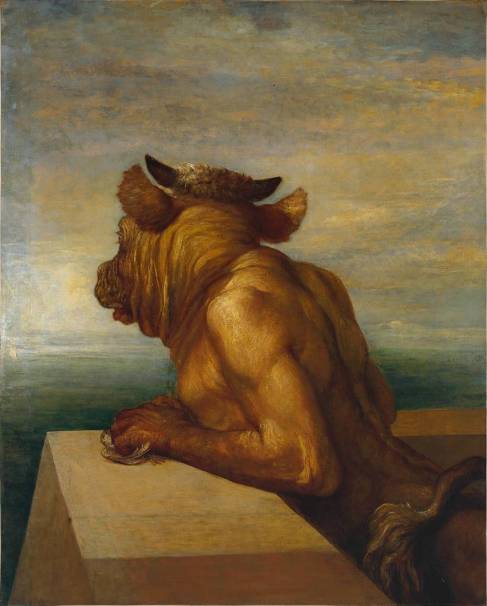
The Minotaur, 1885
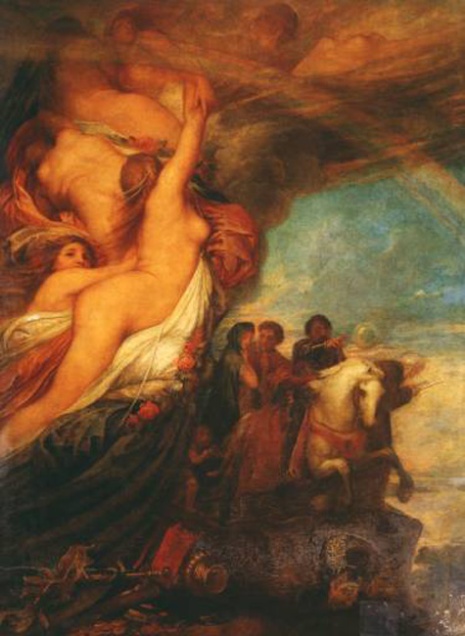
Life’s Illusions 1849
10 Monday Mar 2014
Posted in Art
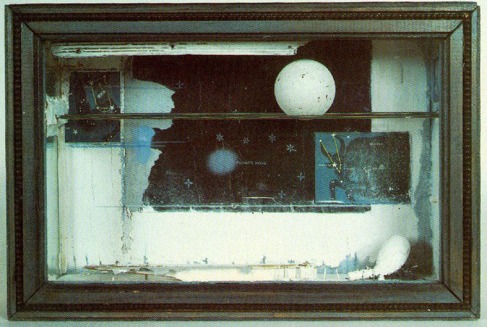
Cassiopeia
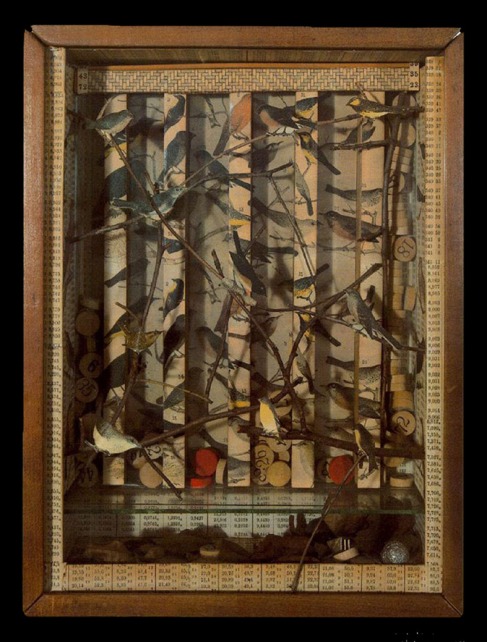
Untitled 1942
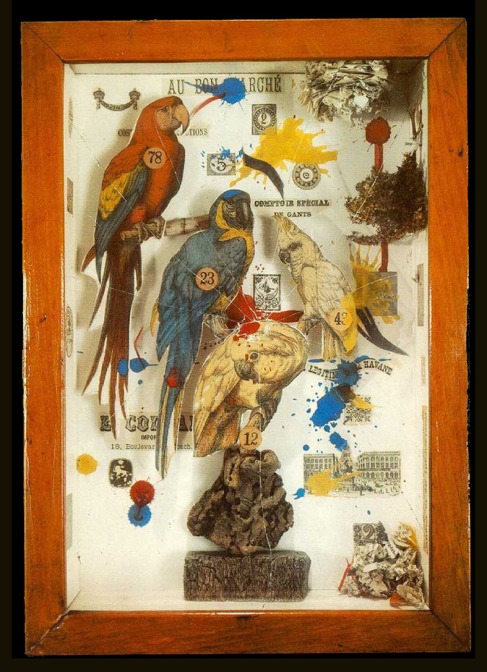
Habitat Group for a Shooting Gallery 1943
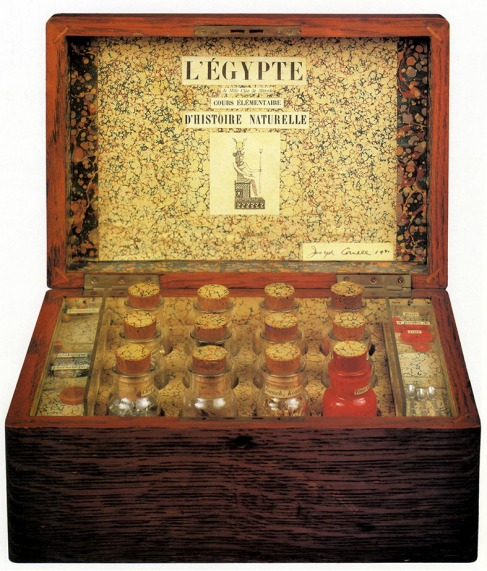
L’Egypte de Mlle Cleo de Merode, cours élémentaire d’histoire naturelle 1940
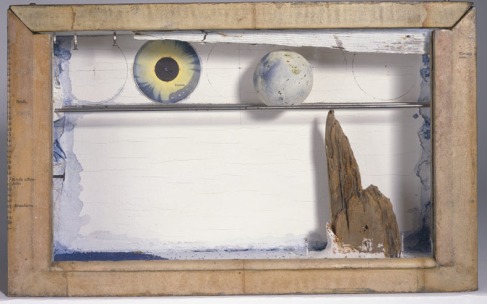
Lunar Scape March 8, 1957
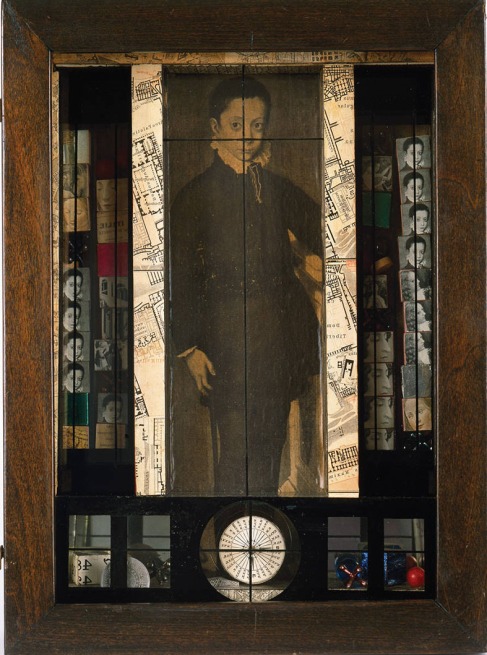
Medici Slot-Machine- Object, 1942
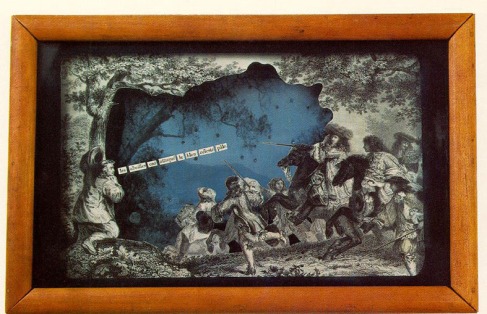
Object (Abeilles) 1940
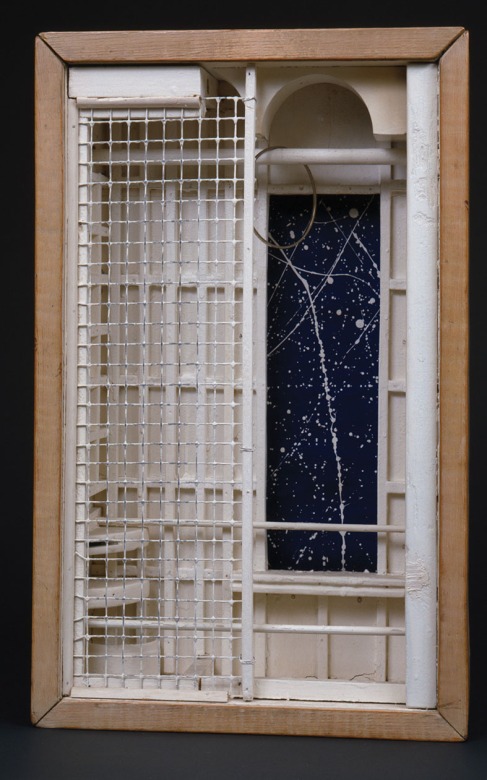
Observatory box 1950
Joseph Cornell (December 24, 1903 – December 29, 1972) was an American artist and sculptor, one of the pioneers and most celebrated exponents of assemblage. Influenced by the Surrealists, he was also an avant-garde experimental filmmaker. Joseph Cornell was born in Nyack, New York, to Joseph Cornell, a well-to-do designer and merchant of textiles, and Helen TenBroeck Storms Cornell, who had trained as a kindergarten teacher. Cornell attended Phillips Academy in Andover, Massachusetts, in the class of 1921, although he did not graduate. Except for the three and a half years he spent at Phillips, he lived for most of his life in a small, wooden-frame house on Utopia Parkway in a working-class area of Flushing, along with his mother and his brother Robert, whom cerebral palsy had rendered physically challenged. Aside from the aforementioned period he spent at the academy in Andover, Cornell never traveled beyond the New York City area. Cornell was wary of strangers. This led him to isolate himself and become a self-taught artist. Although he expressed attraction to unattainable women like Lauren Bacall, his shyness made romantic relationships almost impossible. In later life his bashfulness verged toward reclusiveness, and he rarely left the state of New York. However, he preferred talking with women, and often made their husbands wait in the next room when he discussed business with them. He devoted his life to caring for his younger brother Robert, who was disabled and lived with cerebral palsy. This was another factor in his lack of relationships. He was also rather poor for most of his life, working during the 1920s as a wholesale fabric salesman to support his family. As a result of the American Great Depression, Cornell lost his textile industry job in 1931, and worked for a short time thereafter as a door-to-door appliance salesman. During this time, through her friendship with Ethel Traphagen, Cornell’s mother secured him a part-time position designing textiles. He only really began to sell his boxes for significant sums after his 1949 solo show at the Charles Egan Gallery. Cornell was a highly regarded artist towards the end of his career, yet remained out of the spotlight. He produced fewer box assemblages in the 1950s and 1960s, as his family responsibilities increased and claimed more of his time. He hired a series of young assistants, including both students and established artists, to help him organize material, make artwork, and run errands. At this time, Cornell concentrated on making collages, and collaborated with filmmakers like Rudy Burckhardt, Stan Brakhage, and Larry Jordan to make films that were evocative of moving collages. Cornell’s brother Robert died in 1965, and his mother in 1966. Joseph Cornell died of apparent heart failure on 29 December 1972, a few days after his sixty-ninth birthday.
Cornell’s most characteristic art works were boxed assemblages created from found objects. These are simple boxes, usually fronted with a glass pane, in which he arranged surprising collections of photographs or Victorian bric a brac, in a way that combines the formal austerity of Constructivism with the lively fantasy of Surrealism. Cornell never regarded himself as a Surrealist; although he admired the work and technique of Surrealists like Max Ernst and René Magritte, he disavowed the Surrealists’ “black magic,” claiming that he only wished to make white magic with his art. Cornell’s fame as the leading American “Surrealist” allowed him to befriend several members of the Surrealist movement when they settled in the USA during the Second World War. Later he was claimed as a herald of pop art and installation art.
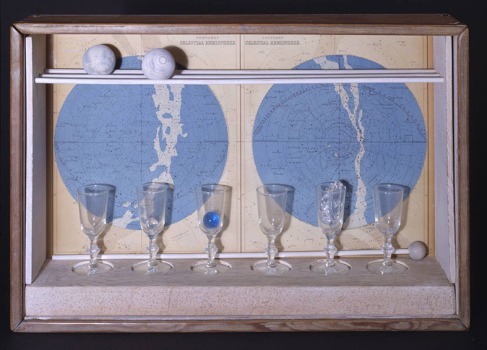
Planet Set, Tête Etoilée, Giuditta Pasta (dédicace) 1950
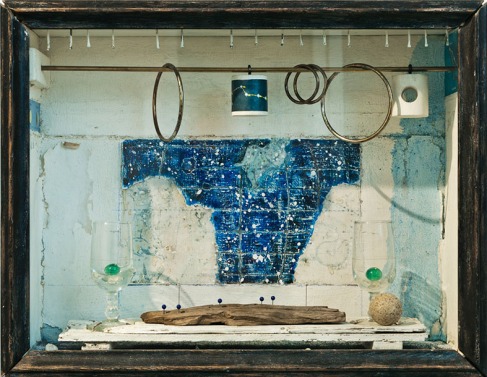
Untitled (Celestial Navigation) 1958

Untitled (Paul and Virginia) c. 1946-48
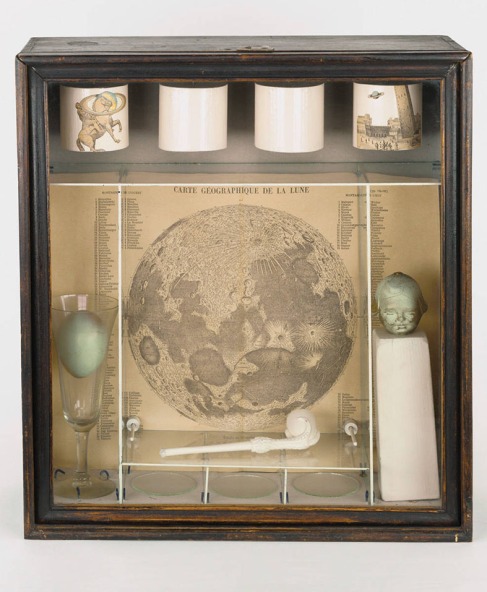
Untitled (Soap Bubble Set), 1936
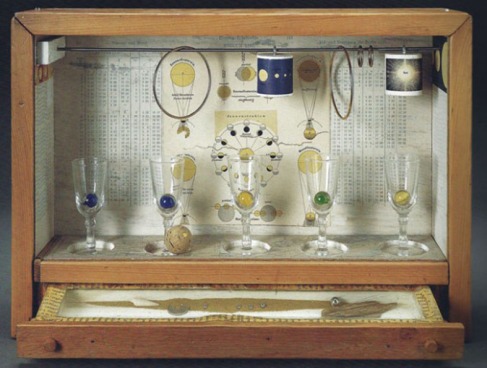
Untitled (Solar Set), c. 1956-58
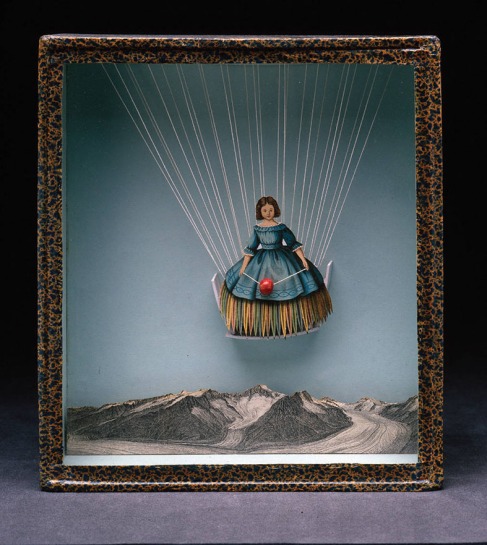
Untitled (Tilly Losch), ca. 1935–38
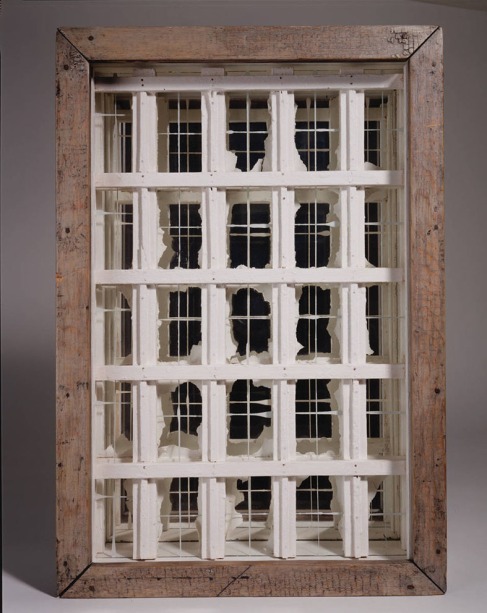
Untitled (Window Facade) (1950-52)
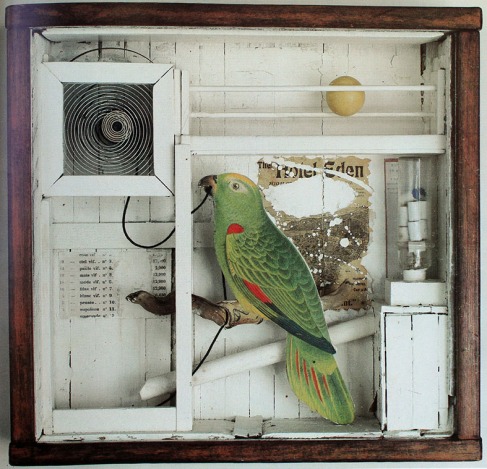
Untitled The Hotel Eden c1945
Joseph Cornell’s 1936 found-film montage Rose Hobart was made entirely from splicing together existing film stock that Cornell had found in New Jersey warehouses, mostly derived from a 1931 ‘B’ film entitled East of Borneo.[10] Cornell would play Nestor Amaral’s record, ‘Holiday in Brazil’ during its rare screenings, as well as projecting the film through a deep blue glass or filter, giving the film a dreamlike effect. Focusing mainly on the gestures and expressions made by Rose Hobart (the original film’s starlet), this dreamscape of Cornell’s seems to exist in a kind of suspension until the film’s most arresting sequence toward the end, when footage of a solar eclipse is juxtaposed with a white ball falling into a pool of water in slow motion. Cornell premiered the film at the Julien Levy Gallery in December 1936 during the first Surrealist exhibition at the Museum of Modern Art in New York.[11] Salvador Dalí, who was in New York to attend the MoMA opening, was present at its first screening. During the screening, Dalí became outraged at Cornell’s movie, claiming he had just had the same idea of applying collage techniques to film. After the screening, Dalí remarked to Cornell that he should stick to making boxes and to stop making films. Traumatized by this event, the shy, retiring Cornell showed his films rarely thereafter.
http://www.dailymotion.com/video/xcm3e9_rose-hobart-1939_shortfilms
06 Thursday Mar 2014
Posted in Photography, The Turconi Collection
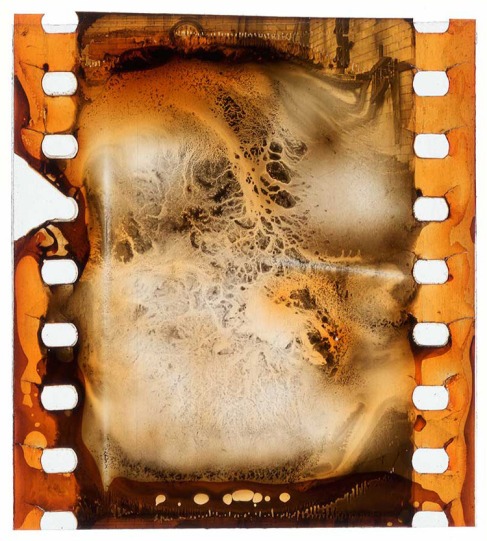
Des Kindes bester Freund
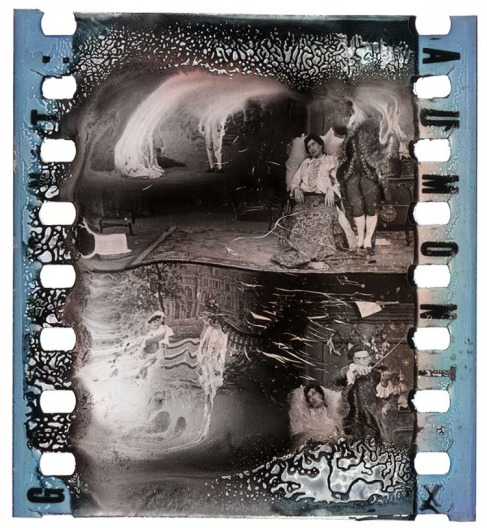
La Mort de Mozart (di. Louis Feuillade, Gaumont, 1909)
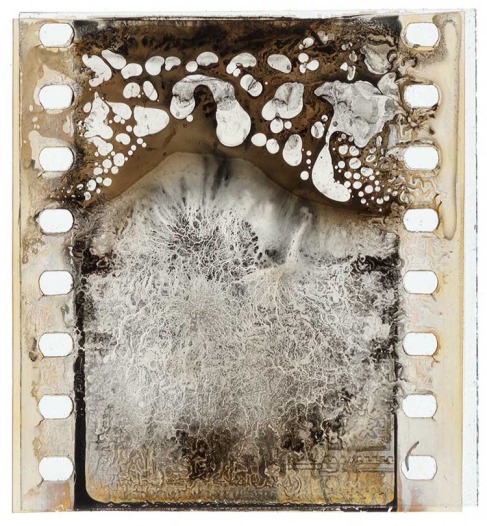
Alboino e Rosmunda (di. Ernesto Maria Pasquali, Pasquali, 1911)
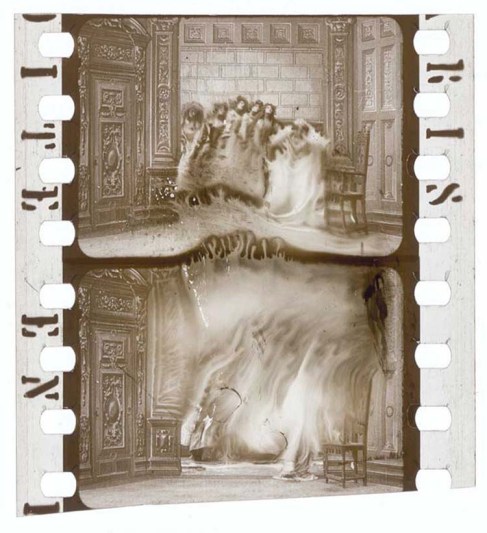
Barbe bleu (Pathé, 1907)
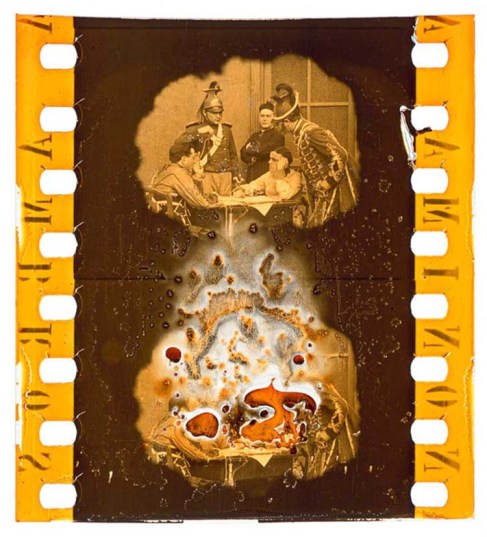
La lampada della nonna (di. Luigi Maggi, Ambrosio, 1913
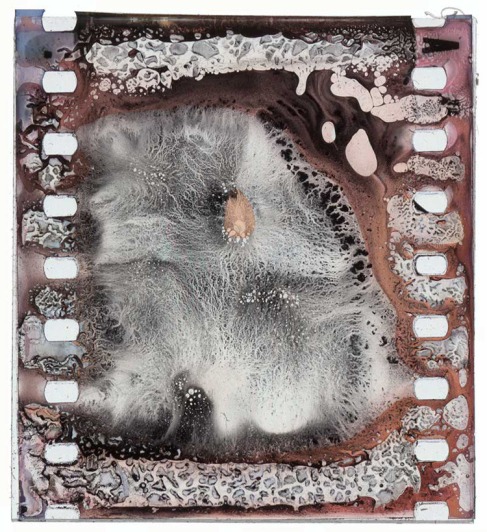
La Mort de Mozart (di. Louis Feuillade, Gaumont, 1909)
David Turconi (1911-2005) was a film historian. In the late 60s, he came across the Josef Joye Collection in Switzerland of old films and found many of the nitrate films decomposing. He tried to get them reprinted on safety film but this became extremely expensive. In an effort to save what he could, he cut frames from these films to at least preserve parts of this extensive collection. He carefully organized these cut frames and archived them with as much information as he could gather about them. Presently there are 23, 491 clippings from this collection, two to three frames each, which cover the earliest years of the cinema (1897-1915). Joye himself was an abbe and taught in a school in Basle in the first decades of the twentieth century. He came up with the idea that in order to hold and keep the attention of his students (and eventually their parents) he could show them films which was, of course, a new technology at the time. He ordered his films through Germany collecting over a thousand films before his death in 1919. These films were later moved to Zurich into better storage facilities by Jesuit Father Bamberger, which was where Turconi discovered them.
George Eastman House holds the majority of this collection and the images can be accessed on their database.
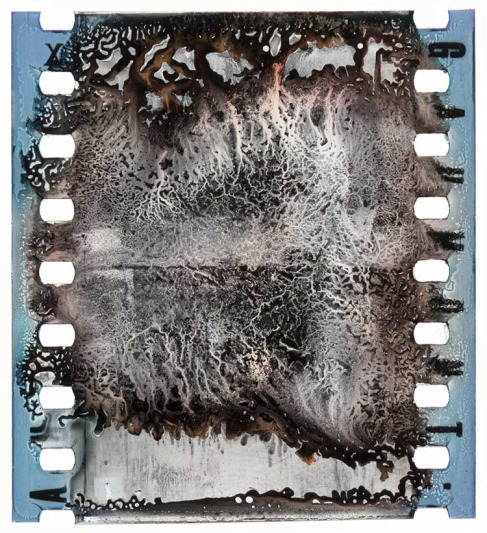
La Mort de Mozart (di. Louis Feuillade, Gaumont, 1909) III
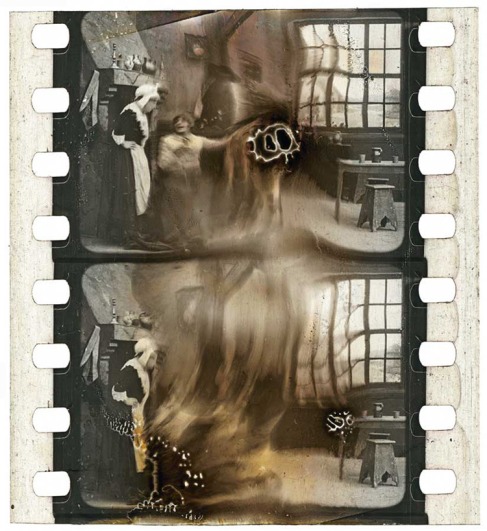
Le Chien du volontaire (Lux, 1909)
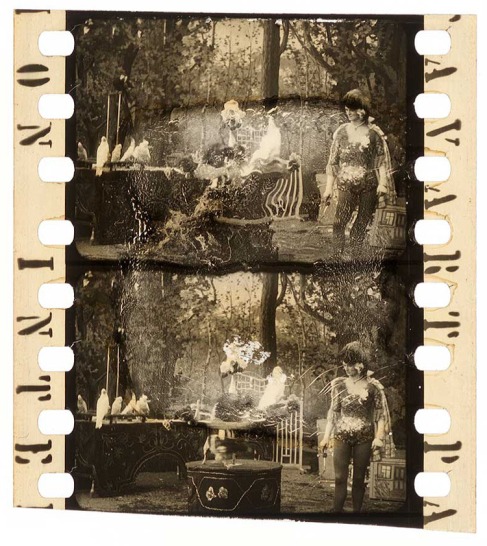
Moderne Dresseur (Pathé, 1910)

Red Eagle (di. Lawrence Trimble, Vitagraph, 1911)
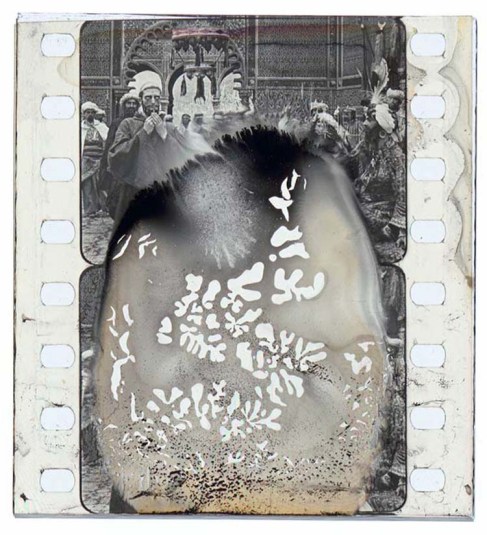
St. Francis of Assisi (di. Enrico Guazzoni, Cines, 1911)

Spaventare il deserto (Gaumont)
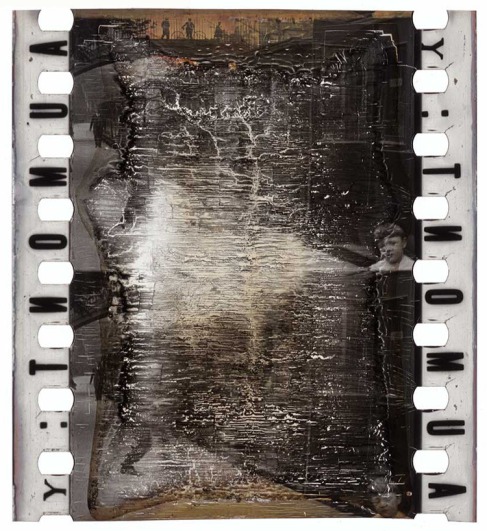
Unidentified (Gaumont)
01 Saturday Mar 2014
Posted in Art, Charles Matton
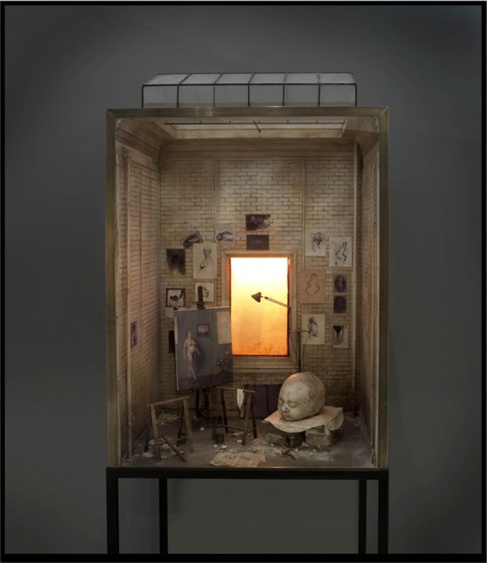
A newborn Sculptor´s Studio I
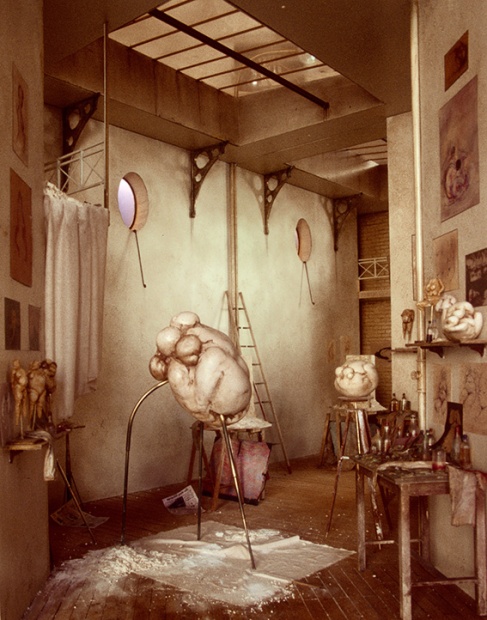
Atelier d’un sculpteur contemporain
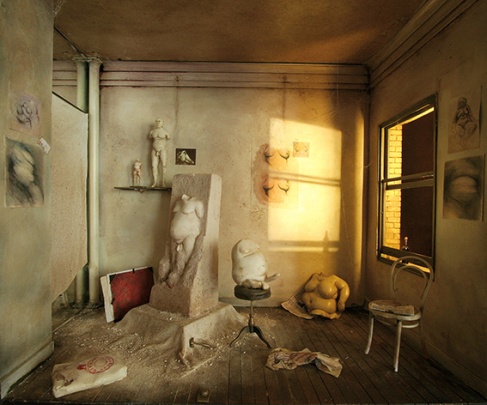
Atelier d’un sculpteur de gros
Atelier d’un sculpteur de rhinocéros

Chambre d’un collectionneur
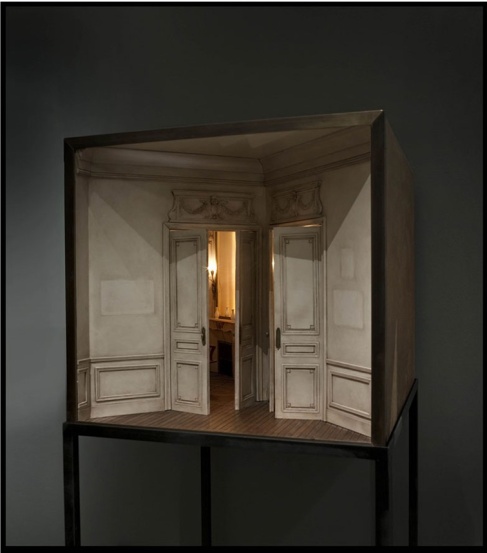
Hall d’hôtel 2
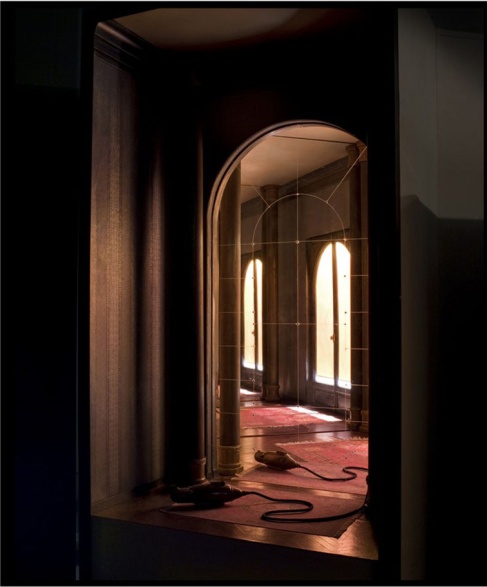
Hall d’hôtel 3
The Parisian artist Charles Matton, who died in 2008, built ‘Boxes,’ that recreated artist studios and mise-en-scènes, emotive still-frames of inhabited interiors, empty hotel hallways, lonesome ateliers and imaginary boîtes. Poking one’s head inside one of Matton’s enclosures is being Gulliver trespassing into another reality and expecting the room’s lilliputian occupants to return any moment.
The fascination with doll’s houses is that we glorify our need for tidying and collecting objects with imperial strokes and a make-belief sense of omniscience. Replicating the world exactly had been Matton’s passions, and his artistic journey began with painting hyperreal interiors that he eventually extrapolated into three-dimensions, creating rooms with walls exactly as he would have painted them on canvas, drawing cracks on the patina, filtering sun and shade on the furniture, miniaturizing the effects of light itself.
Reduced to a scale of 1:7, the boxes use mirrors and light to project an anamorphic, miniature wonderland, in which our sense of perception is enhanced rather than being diminished: The wires and outlets, chipped wood, dust and stains, the slant of a picture, a crooked frame, a curtain’s crease and mirrored reflections astonish us with details that would likely be overlooked if the same room were at eye-level. Seeing is amplified. Our eyes sweep entire vistas instead of vision being patched together by our consciousness.
Matton’s boîtes are not just an arrangement of artefacts but encapsulate the memory of a fleeting moment. His series of ateliers, Francis Bacon and Alberto Giacometti’s studios and Sigmund Freud’s study, were meticulous reconstructions created through exhaustive research of the originals. He painstakingly crafted miniature newspapers and book covers, wall hangings and scaled down sculptures to give the studios the authenticity of a lived-in space, pushing the spectator to the position of voyeur.
Jean Baudrillard, who was a close friend of the artist for twenty-five years, described Matton’s worlds, “when they are condensed in a marvelously small space, one rediscovers their quintessence. Recreating a space and a scene on a smaller scale convinces us to enter it more intimately.” Delighting in his obsessiveness, Baudrillard concluded that Matton, was “quite certainly a fetishist.”
By Kisa Lala

La Bibliothèque hommage à Proust II
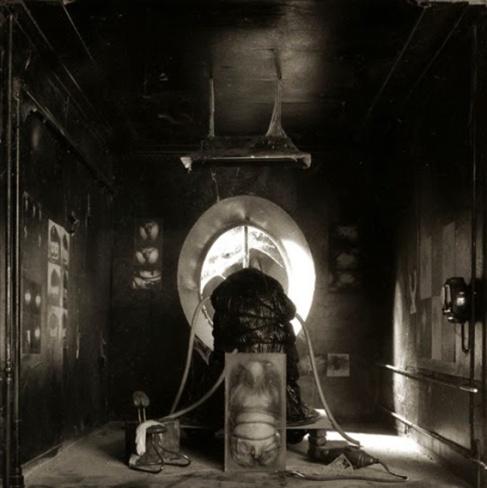
Le Grenier de Sacher Masoch

Les Dessins de ‘La Pomme’
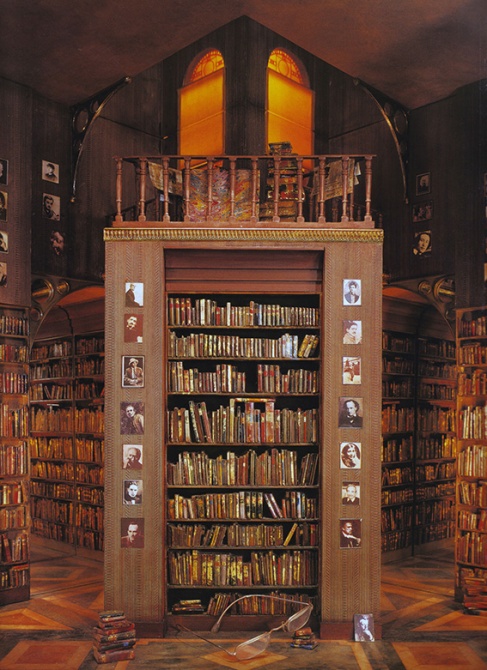
Libraririe de Babel Hommage a Jorge Luis Borges
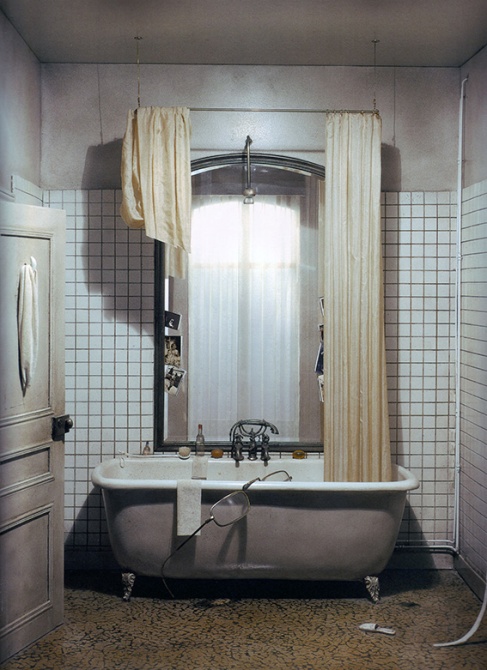
Salle de bains 4
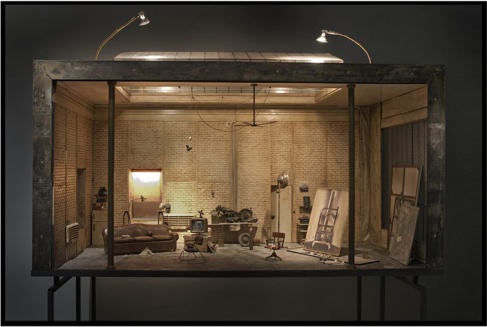
The Large Loft, 26th Street, New York, 1986
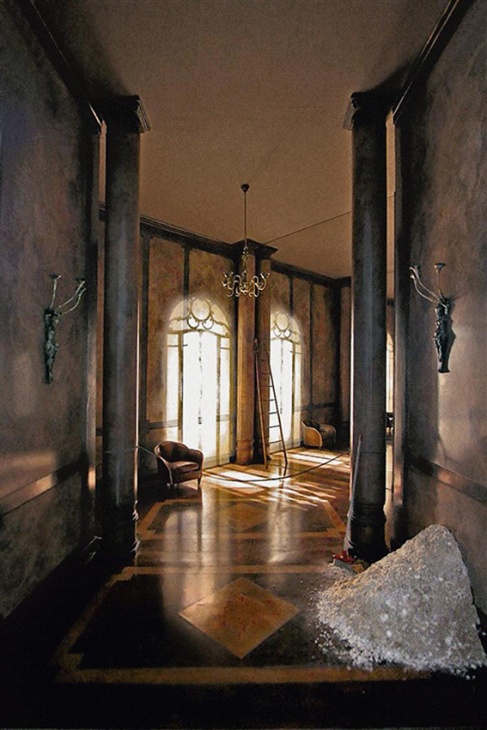
Hall d’hôtel 4
28 Friday Feb 2014
Posted in My photographs, W.G. Sebald
“…the longer I think about it the more it seems to me that we who are still alive are unreal in the eyes of the dead, that only occasionally, in certain lights and atmospheric conditions, do we appear in their field of vision.”
― W.G. Sebald, Austerlitz